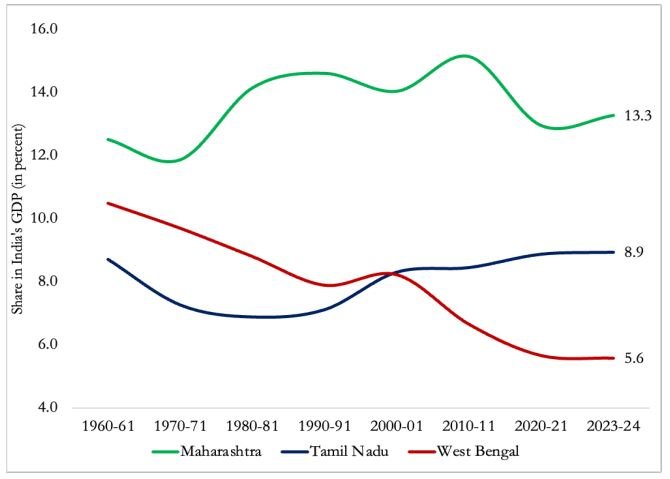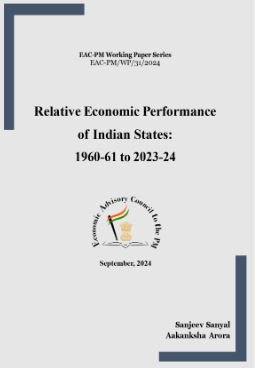Maritime states have outperformed the other states, except West Bengal. Even the coastal state of Odisha, traditionally a laggard state, has seen improved performance in the last two decades. EAC-PM reports.
West Bengal vs. Odisha: EAC-PM report
In the 1960s, West Bengal was an economic powerhouse, contributing 10.5% of India’s GDP in 1960-61. However, its share has dwindled to 5.6% in 2023-24. West Bengal’s per capita income was once 127.5% above the national average but has since dropped to 83.7%. The state’s economic growth has not kept pace with national trends.

Odisha, traditionally seen as an underperforming state, has shown remarkable progress. From a decline in relative per capita income, falling to 54.3% in 1990-91, Odisha has rebounded to 88.5% in 2023-24. Investments in industrialization, port development, and mineral resources have driven this turnaround. EAC-PM report
Southern States: Economic Surge After 1991
The southern states—Karnataka, Andhra Pradesh, Telangana, Kerala, and Tamil Nadu—have emerged as economic leaders since the economic liberalization of 1991. Together, they now contribute 30% of India’s GDP. Their per capita incomes have also surpassed the national average. Telangana leads with a per capita income at 193.6% of the national average, followed by Karnataka at 181%, Tamil Nadu at 171%, and Kerala at 152.5%.
Western States: Consistent Growth Leaders: EAC-PM report
Maharashtra and Gujarat have been consistent economic performers. Maharashtra has held the highest share of India’s GDP for decades, while Gujarat has seen rapid growth since 2000-01. Gujarat’s per capita income surpassed Maharashtra in 2010-11 and is now 160.7% of the national average compared to Maharashtra’s 150%. Goa stands out with per capita income nearly three times the national average, second only to Sikkim. EAC-PM report
Northern States: Punjab vs. Haryana
While Punjab flourished during the Green Revolution, its growth has slowed since 1991. Its share of national GDP dropped to 2.4% in 2023-24, and its per capita income is now 106.7% of the national average. In contrast, Haryana has excelled, with a GDP share surpassing Punjab and a per capita income of 176.8%.
Central States: Decline and Recovery
Uttar Pradesh, once India’s largest economic contributor, saw its share of GDP decline from 14.4% in 1960-61 to 8.4% in 2023-24. Madhya Pradesh, after decades of underperformance, has improved its relative per capita income from 60.1% in 2010-11 to 77.4% in 2023-24.
North-Eastern States: Sikkim’s Remarkable Growth
Sikkim’s economic transformation is impressive. Its per capita income, once below the national average, surged to 320% by 2023-24. Assam, though initially above the national average, has seen a decline in its per capita income, but it has begun to recover, reaching 73.7% of the national average in 2023-24. reportsrecords.com








